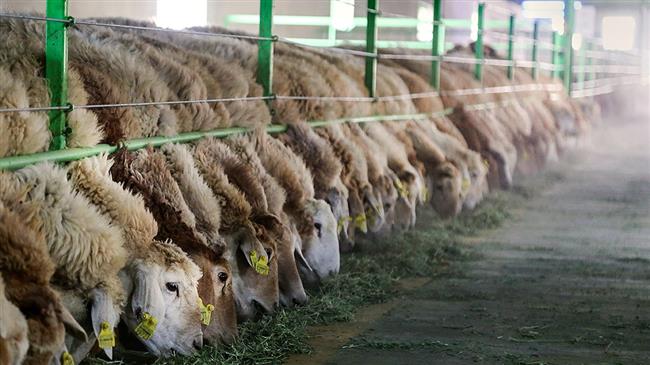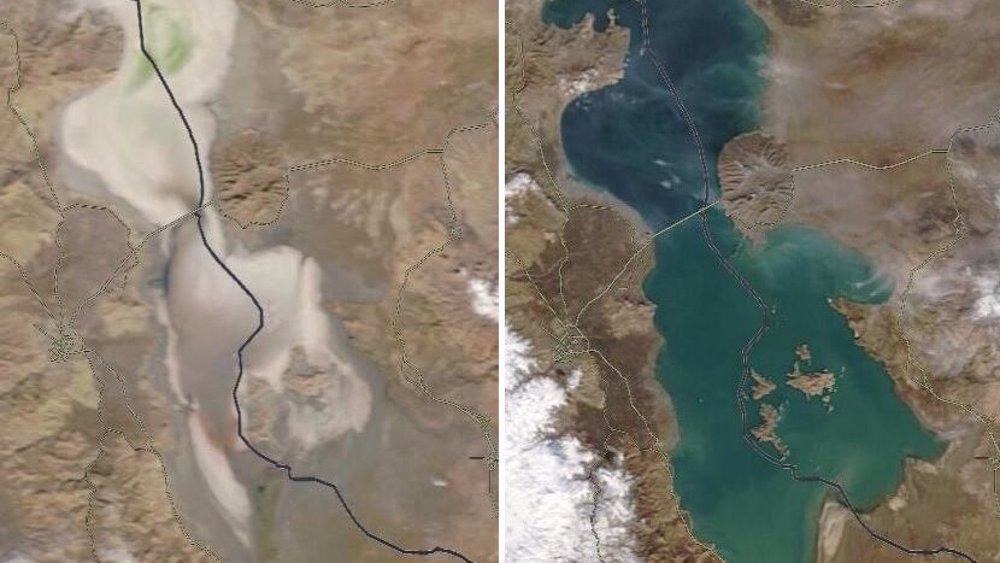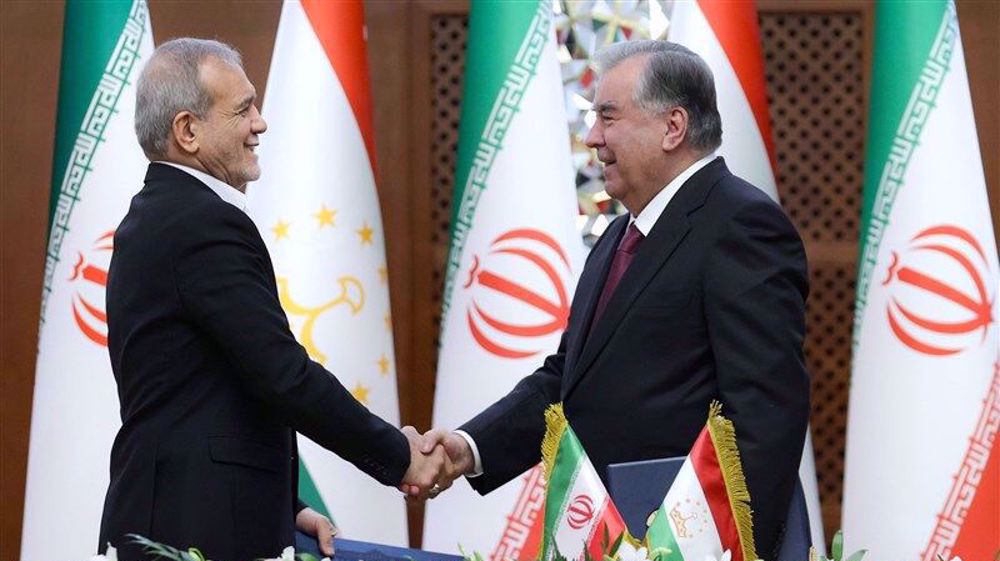Iran's largest industrial livestock farm opens near Tehran
Iran has opened its “largest” industrial livestock breeding and production farm near Tehran, with one senior official calling it a milestone in the country’s plan to cut $1 billion worth of agricultural and livestock imports a year.
The 80,000-head capacity feedyard for small ruminants in Fashafoyeh, 40 km south of Tehran, is dedicated to breeding sheep, Fars news agency reported.
The first phase of the feedlot was inaugurated on Tuesday during a ceremony which also included the ground-breaking of a dairy factory with a capacity to produce 12,000 tonnes of butter and 40,000 tonnes of powdered milk a year.

The Barakat Foundation, a charitable bonyad focusing on economic development projects in rural regions, has set up the farm – one of the 60,000 projects which it plans to finish this year, with 80 percent of them dedicated to animal husbandry.
“According to the plans we have established for ourselves, we intend to stop the import of $1 billion worth of agricultural and livestock products in three years and currently, we are 25% ahead of our plans,” head of the Execution of Imam Khomeini's Order (EIKO) Mohammad Mokhber said.
The Barakat Foundation is a subsidiary of EIKO which has been established with the aim of helping the underprivileged.
Deputy governor of Tehran Heshmatollah Asgari hailed EIKO for getting proactively involved in the food security issue “which concerns all people”.
“The powerful entry of Setad into the strategic field of agriculture and food security and partnership with the private sector to address shortcomings has been a source of great goodness for the country and has caused a jump in production and prevented the outflow of foreign exchange,” he said. Setad is the alternative name for EIKO.

Food security is one of the key development priorities of Iran. Since 1979, the country has put self-sufficiency at the heart of its policies, especially in strategic staples such as wheat.
According to the United States Institute of Peace, Iran imported 65 percent of its food in 1979, but it now produces 66 percent of its food basket.
Nevertheless, Iran’s efforts to import some of its food especially amid the most draconian US sanctions are fraught with challenges which lead to periodic market volatility, where certain goods suddenly disappear from the inventories.
Food security
Foodstuffs are purportedly not restricted by US sanctions, but banking sanctions and asset freezes are making it all but impossible for trading houses to do business with Iran.
Food prices are a key driver of inflation which has traditionally been high in Iran because of having an oil-based economy.
Iran relies on imports for 90 percent of water-intensive products it needs, such oilseeds.
The shortfall was mentioned during the Tuesday ceremony where Mokhber said, “It is not appropriate for our country to be up to 90 percent dependent on imports in the field of oilseeds and butter.”
For years, Iran has been exploring overseas resources to ensure stable supplies of agricultural products for a rapidly urbanizing population. According to former agriculture minister Mahmoud Hojjati, contracts for cultivation on nearly 800,000 to one million hectares in a number of countries have been signed and approved by the government.
Kazakhstan, Ukraine, Brazil and Ghana have been cited in the media among the places which Iran was pushing for long-term leasing or ownership of farmlands with higher agribusiness potentials.
Inside Iran, the government has tried actively to support the rural sector and agricultural production. Key aspects of this strategy have been buying selected crops and products at guaranteed prices from producers and initiating rural development in order to benefit villagers and prevent them from migrating to cities.
Agriculture is a major economic sector in Iran, with great potential for development and as such, it is seen a key strategic policy area. It contributes more than 25 percent of GDP and one-third of total employment. It also contributes substantial export earnings, one-third of total non-oil exports.
Leap in livestock production
Livestock is an important national resource in Iran and a key component of the government’s plans to achieve higher levels of food production and more diversified sources of foreign exchange in order to reduce vulnerability to oil price fluctuations.
Livestock also plays a key role in the lives of the rural population, generating employment and often providing about 80 percent of their income.
Sheep and goats produce about 53 percent of the red meat. Due to Iran's geographical topography, there are about 28 known sheep and goat breeds, which are reared by villagers and nomadic tribes.
According to the latest figures cited by Mehr news agency, Iran’s sheep population totaled 47.3 million head in May and its goats numbered 17 million, up 0.1 percent and 2.9 percent respectively year-on-year.
The total cattle count in February stood at 4.8 million head, up 13.2 percent from the last census carried out in October 2014, the news agency said, citing figures by the Statistical Center of Iran.
“Iran cannot compete closely with the avant-garde countries in certain industrial fields, but it is able to compete in the livestock and agricultural industry,” head of Isfahan Chamber of Commerce Abdolvahab Sahlabadi has said.
Production of milk, red meat, poultry meat and eggs has increased in recent years. To achieve self-sufficiency, officials are promoting modern breeding and crop management methods.
According to Hojjati, the application of modern breeding techniques in cattle has produced "extraordinarily good breeds" in the country, leading to exports of livestock and genetic material to the regional countries.
“Thanks to our exemplary farms and up-to-date agro-industries, we are in a very good position, and many of the country's production units compete with industrial farms in the United States, Canada and Europe.”
Sahlabadi said Iran had already started exporting embryos and calves to the Central Asian countries, as well as Afghanistan, Iraq and Oman.
Prisoner thanks Gazans after release, says Israel tortures Palestinians
Trump blitzkrieg to drastically downsize US government
Hamas names three captives to be released Saturday
Iran determined to boost ties with Kyrgyzstan: VP
VIDEO | Trump orders to investigate, deport pro-Palestinian foreign students and staff
Iran begins celebrations marking victory of Islamic Revolution
‘Multiple’ Israeli airstrikes hit Lebanon in breach of ceasefire
Official: Hamas will continue to administer Gaza as war 'over'












 This makes it easy to access the Press TV website
This makes it easy to access the Press TV website